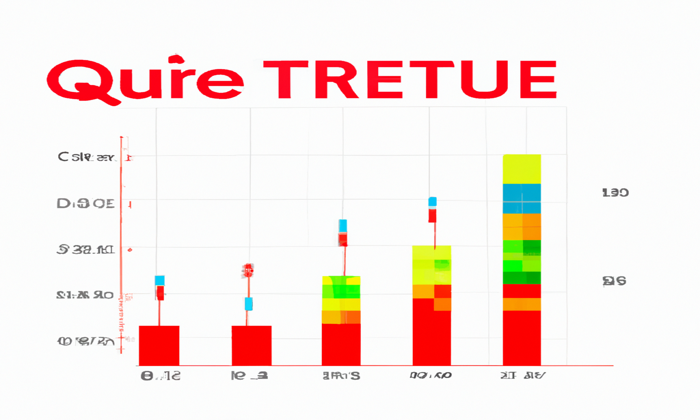Vitalik Buterin Ethereum RISC-V proposal marks a transformative leap for Ethereum’s scalability by introducing a robust alternative to the current EVM. As the co-founder of Ethereum, Buterin has long championed innovations that enhance the blockchain’s performance, and this proposal aims to replace the Ethereum Virtual Machine with the RISC-V instruction set, a well-established open-source architecture. This shift could greatly simplify the execution of smart contracts, addressing the existing limitations that hinder Ethereum’s growth potential. By leveraging RISC-V, the efficiency of zero-knowledge proofs can be significantly improved, paving the way for more advanced applications and integrations within the Ethereum ecosystem. Ultimately, this strategic change is geared towards ensuring Ethereum remains a competitive force in an evolving blockchain landscape.
In a bold move to boost the efficiency of Ethereum, Vitalik Buterin has put forth a proposal suggesting the transition from its current virtual machine to a RISC-V architecture. This proposal encompasses the idea of utilizing an open-source instruction set that promises to streamline smart contract executions and significantly enhance the network’s scalability. By replacing the existing execution layer, Buterin envisions a more efficient processing method for zero-knowledge proofs, which play a crucial role in the privacy and speed of transactions. This overhaul aims not only to maintain but to enrich the current framework of Ethereum’s system, ensuring that existing contracts operate seamlessly while also adapting to modern demands. Such transformative advancements may well position Ethereum as a leader in blockchain efficiency amidst growing competition.
The Need for Scalability in Ethereum
Scalability remains a critical challenge for Ethereum as it continues to expand its user base and application ecosystem. As more decentralized applications (dApps) and smart contracts are deployed, the current Ethereum Virtual Machine (EVM) struggles to maintain performance levels. The limitations of the EVM have become a bottleneck, leading to slower transaction speeds and higher fees during peak usage periods. This scenario calls for a robust solution that not only enhances the throughput but also optimizes the overall execution efficiency of smart contracts.
The scaling issues are pronounced when considering Ethereum’s competition with other blockchains like Solana and Sui, which boast higher transaction speeds and lower fees. In response to these challenges, transitioning to a more efficient processing structure such as RISC-V could offer a viable path forward. By embracing an open-source architecture, Ethereum can align its technical foundations to better cope with the demands of its ever-growing ecosystem.
Vitalik Buterin’s Ethereum RISC-V Proposal
Vitalik Buterin’s proposal to replace the EVM with the RISC-V instruction set architecture marks a significant shift in Ethereum’s approach to scalability. This new foundational layer could redefine how smart contracts operate, potentially leading to a much more efficient system. RISC-V’s open-source nature allows for greater flexibility and adaptation, enabling developers to write smart contracts that compile directly to this architecture, thereby reducing complexity and enhancing performance.
The implications of this move are substantial. By adopting RISC-V, Ethereum could boost prover efficiency significantly, according to Buterin, potentially by over 50 times. Given that zero-knowledge proofs (ZKPs) are crucial for privacy and security in Ethereum, the integration of RISC-V can streamline the process whereby these proofs are generated. This could lead to a surge in usage as developers harness the power of ZK-EVMs with less overhead, ultimately making Ethereum a more attractive platform for building decentralized applications.
Understanding RISC-V and Its Advantages
RISC-V represents a modern evolution of instruction set architectures, being open-source and customizable. By leveraging this innovative architecture, Ethereum stands to gain several advantages in terms of computational efficiency and resource management. Unlike proprietary instruction sets, RISC-V’s openness encourages collaboration and optimization, fostering an ecosystem that focuses on building tailored solutions for Ethereum’s unique challenges.
Furthermore, the RISC-V architecture’s ability to facilitate zero-knowledge proofs will likely enhance Ethereum’s capability to handle complex transactions more efficiently. Developers will be able to ensure that their smart contracts run faster and consume less computational power, which can alleviate the current scalability pressures faced by the network. Embracing RISC-V could, therefore, transition Ethereum into a new era of performance and innovation.
Zero-Knowledge Proofs and Ethereum’s Future
Zero-knowledge proofs are becoming increasingly important in enhancing security and privacy on the Ethereum network. These cryptographic methods allow for transactions to be verified without revealing sensitive details about the transaction itself. As Ethereum prepares to adopt the RISC-V architecture, integrating zero-knowledge proofs directly into the smart contract execution framework could significantly boost performance, making Ethereum more robust against scalability issues.
By optimizing the execution layer for zero-knowledge-based scaling, Buterin’s proposal allows the network to maintain higher transaction volumes with improved efficiency. This alignment with cutting-edge cryptography not only enhances Ethereum’s scalability but also establishes it as a leader in security standards among blockchain technologies. As Ethereum continues to innovate, the integration of zero-knowledge proofs will likely play a pivotal role in its journey toward increased adoption and functionality.
Impacts on Smart Contracts and Developers
Transitioning to RISC-V will have profound effects on how developers create and deploy smart contracts on the Ethereum platform. With the prospective move to an instruction set architecture that prioritizes efficiency, developers will find their workflow significantly streamlined. Existing programming languages like Solidity and Vyper will need to adapt, but the core functionality will remain intact, allowing developers to easily transition their projects to utilize RISC-V capabilities.
Moreover, the shift may spur innovation among Ethereum developers as the community begins to explore the full potential of the RISC-V architecture. By minimizing the complexity of the intermediary steps currently involved in deploying ZK-EVMs, developers can focus their efforts on creating more sophisticated and scalable dApps. This could foster an environment of exploration and growth, solidifying Ethereum’s status as a primary platform for blockchain development.
Maintaining Backward Compatibility
One of the key considerations in Vitalik Buterin’s RISC-V proposal is ensuring backward compatibility with existing Ethereum contracts. This aspect is crucial as it allows legacy EVM contracts to operate alongside new RISC-V contracts without disruption. Maintaining this compatibility will ease the transition for developers and users while preserving the integrity of the Ethereum ecosystem.
By carefully managing the compatibility layer, Ethereum can leverage the benefits of RISC-V while still providing a stable environment for existing smart contracts. This approach not only protects the investments made by current developers and users but also facilitates a smoother evolution of the Ethereum platform. As the Ethereum community embraces RISC-V, ensuring that the transition retains essential functionalities will be critical to its long-term success.
Ethereum’s Competitive Edge in the Blockchain Landscape
With the advent of high-performance competitors like Solana, Ethereum’s ongoing scalability hurdles have necessitated a shift in strategy. By adopting RISC-V, Ethereum could consolidate its competitive advantage in the blockchain arena. This architectural revamp has the potential to dramatically enhance transaction speeds and lower costs, keeping pace with or even outstripping rival platforms.
Buterin’s call for such a foundational change suggests that, in order to maintain its dominance, Ethereum must not only focus on incremental improvements but also embrace transformative upgrades like RISC-V. As the blockchain landscape evolves, the ability to adapt quickly and effectively could determine Ethereum’s future viability and success.
Layer 2 Solutions and Their Role
While Buterin’s proposal is focused on enhancing Ethereum’s core infrastructure, it naturally intersects with existing Layer 2 solutions that aim to alleviate network congestion. Many users have turned to Layer 2 networks to lower transaction costs and improve speeds, but these solutions are not without limitations. By adopting RISC-V, Ethereum could serve as a more robust foundation that supports both Layer 1 and Layer 2 solutions effectively.
The integration of RISC-V could lead to a synergistic relationship with existing Layer 2 systems, enhancing the overall user experience on the Ethereum network. This means that as Ethereum’s core system becomes more efficient, Layer 2 applications could benefit by operating in a better-performing environment. Ultimately, this interconnected approach may lead to a more resilient and efficient Ethereum ecosystem.
Long-Term Vision for Ethereum’s Evolution
In the grand scheme, Vitalik Buterin’s proposal to switch to RISC-V is not merely a reaction to current issues but a long-term vision for Ethereum’s evolution. As the demands of the blockchain community grow, so too must the capabilities of Ethereum. By pioneering new technologies and methodologies, Ethereum can position itself at the forefront of blockchain innovation.
The foresight demonstrated by Buterin and other Ethereum leaders shows a commitment to continuous improvement and adaptation. Embracing RISC-V could be just the beginning of a series of transformative upgrades that enhance Ethereum’s scalability, security, and overall functionality, ensuring it remains a vital player in the rapidly changing landscape of cryptocurrency and blockchain technology.
Frequently Asked Questions
What is Vitalik Buterin’s Ethereum RISC-V proposal about?
Vitalik Buterin’s Ethereum RISC-V proposal suggests replacing the Ethereum Virtual Machine (EVM) with RISC-V, an open-source instruction set architecture. This change aims to enhance Ethereum’s scalability and improve the performance of executing smart contracts by addressing the EVM’s limitations, which Buterin deems a bottleneck for long-term scalability.
How does the RISC-V instruction set improve Ethereum scalability?
The RISC-V instruction set can significantly enhance Ethereum scalability by allowing smart contracts to compile directly to RISC-V, improving execution efficiency. Vitalik Buterin suggests that this approach could increase prover efficiency by over 50 times, which is crucial for handling more transactions and smart contracts efficiently within the Ethereum network.
Will Vitalik Buterin’s Ethereum RISC-V proposal affect existing smart contracts?
No, the proposed shift to RISC-V is designed to maintain backward compatibility with existing smart contracts on Ethereum. Vitalik Buterin ensures that legacy EVM contracts will continue to work and interact with newly created RISC-V contracts, preserving the current account structure and inter-contract communication.
What impact could the RISC-V proposal have on zero-knowledge proofs in Ethereum?
Vitalik Buterin’s proposal to implement RISC-V could enhance the efficiency of zero-knowledge proofs (ZK-proofs) within Ethereum, as these proofs currently translate operations into RISC-V for execution. By streamlining this process, the Ethereum network could benefit from improved performance in ZK-EVMs, which are vital for scaling solutions.
How does Vitalik Buterin’s RISC-V proposal address Ethereum’s current network challenges?
The RISC-V proposal targets Ethereum’s declining network activity and low transaction fees by offering a fundamental change to its execution layer. By replacing the EVM with RISC-V, the proposal aims to restore Ethereum’s competitive edge and attract users back to the network by promising enhanced performance, which is increasingly important as users shift to layer-2 solutions.
What programming languages will be affected by the transition to RISC-V in Ethereum?
Popular Ethereum programming languages such as Solidity and Vyper will still function effectively under the RISC-V architecture. Vitalik Buterin emphasizes that these languages will adapt to focus on RISC-V rather than the EVM, allowing developers to continue building and deploying smart contracts with familiar tools.
When is the change to RISC-V expected to be implemented in Ethereum?
The exact timeline for implementing the RISC-V architecture within Ethereum has not been specified by Vitalik Buterin. While he has highlighted the necessity for this fundamental change amidst upcoming upgrades, any transition will depend on the Ethereum development community’s consensus and the outcome of ongoing discussions and technical evaluations.
| Key Point | Details |
|---|---|
| Proposal | Vitalik Buterin proposes replacing Ethereum’s EVM with RISC-V. |
| Purpose | To achieve better scalability and performance for smart contracts. |
| Benefits of RISC-V | Improved proving efficiency and bypassing intermediary steps in contract execution. |
| Backward Compatibility | Legacy EVM contracts will still function within the new RISC-V framework. |
| Impact on Performance | Potential increase in prover efficiency by over 50 times. |
| Current Context | Ethereum faces low network usage and declining transaction fees. |
| Upcoming Events | Pectra upgrade scheduled for May 7, but may not solve scalability issues. |
Summary
The Vitalik Buterin Ethereum RISC-V proposal seeks to revolutionize Ethereum by replacing the Ethereum Virtual Machine with the RISC-V architecture. This move is intended to enhance transaction performance, scalability, and the efficiency of smart contracts on the Ethereum blockchain. By directly compiling to RISC-V, Buterin anticipates that Ethereum can better compete with faster blockchains, while still maintaining backward compatibility to ensure a seamless transition for existing users.
Vitalik Buterin’s Ethereum RISC-V proposal marks a pivotal moment in the evolution of Ethereum’s scalability. By suggesting a replacement of the Ethereum Virtual Machine (EVM) with RISC-V—an innovative open-source instruction set architecture—Buterin aims to address long-standing issues hampering the execution efficiency of Ethereum smart contracts. This significant change promises not only to enhance the performance of zero-knowledge proofs but also to simplify the overall computation process in the Ethereum network. By leveraging RISC-V, developers could create contracts that compile directly to this robust architecture, potentially increasing prover speeds dramatically. As Ethereum faces a decline in network usage and transaction fees, Buterin’s proposal serves as an audacious step towards ensuring that Ethereum maintains its position against emerging, faster blockchains that challenge its scalability.
The discussion surrounding the future of Ethereum has gained traction with Buterin’s recent proposal to adopt the RISC-V architecture as a new computational foundation. This strategic pivot aims to replace the traditional Ethereum Virtual Machine, addressing critical challenges in the execution of smart contracts. RISC-V, known for its adaptability and performance, could revolutionize how zero-knowledge proofs function within the Ethereum ecosystem. By enabling a more efficient compilation process for smart contracts, Buterin’s vision lays the groundwork for an upgraded scalability framework that might vastly improve transaction speeds and reduce operational bottlenecks. As Ethereum considers these foundational changes, the potential for enhanced interaction with legacy systems remains a crucial component of this ongoing evolution.















